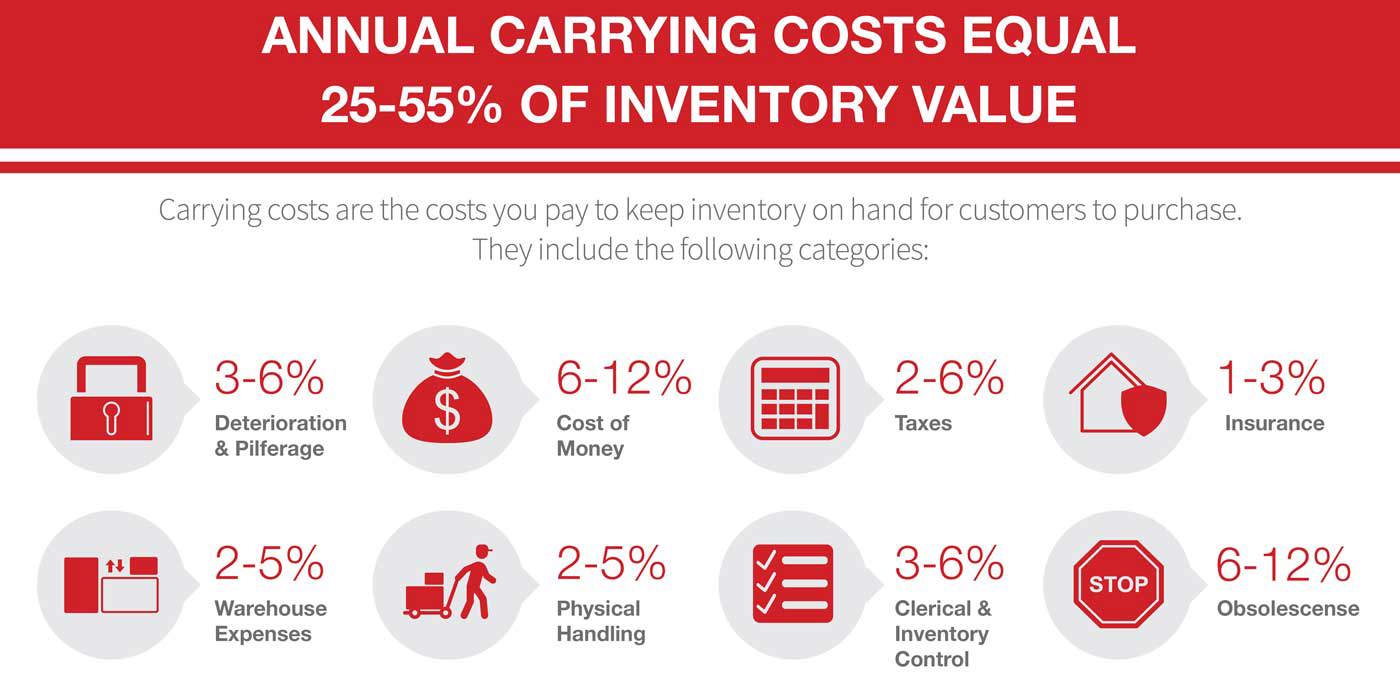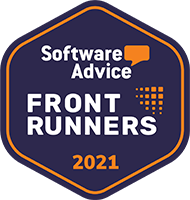Carrying Costs in Inventory Management: A Guide to Reducing the Cost of Inventory in Your Business

Holding inventory in your warehouse or stockroom is great for ensuring customers have access to what they need when they need it. But there are costs to storing and holding these items, and they’re known as carrying costs in inventory management.
Here, we’ll dive into what carrying costs are, why they can be problematic, and how to reduce them by putting the right technology to work.
What are the carrying costs in inventory management?
Carrying costs are the costs of holding inventory. This generally includes the costs of storing inventory in a warehouse and includes things like rent, utilities, and warehouse employee salaries. It can also refer to costs such as insurance, perishability, or shrinkage. Essentially, carrying costs involve the costs you pay to keep inventory on hand for customers to purchase. Inventory carrying costs usually add up to about 25% to 55% of inventory value.
Types of carrying costs
Inventory carrying costs are typically broken down into variable costs, fixed costs and other costs:
- Variable costs. These include the cost of money (that is, the money tied up in the inventory itself, also called cost of capital), taxes and insurance. These costs can fluctuate over time.
- Fixed costs. Fixed costs include warehouse expenses, such as rent and utilities for storing goods in the warehouse space. These costs also include salaries for permanent warehouse staff.
- Other costs. Additional costs that contribute to inventory carrying costs might include inventory control, obsolescence, pilferage and clerical costs. Many of these are unpredictable, such as when items are stolen or when demand suddenly drops or spikes — such as during a global pandemic.
Because inventory has value, and it’s not free to store those items, there will always be some sort of carrying cost associated with your inventory. However, sometimes those costs are tying up more cash than they need to be.
How do businesses incur excess carrying costs?
Distributors incur carrying costs by:
- Building an inventory buffer. Distributors tend to keep extra inventory in case consumer demand spikes above expected amounts.
- Catering to seasonal demands. A company that sells snow shovels would want to ramp up inventory right before winter hits, or right before a pending snowstorm.
- Saving on transportation costs. Some companies order inventory in bulk, especially from overseas suppliers, to save on costly shipment fees or take advantage of scale. This can help save money, but may leave them with more inventory than required.
- Outdated or unwanted inventory. It’s not uncommon for businesses to eventually notice that certain items just aren’t flying off the shelves. This “dead” inventory can tie up cash. Discounts or price reductions can help get them moving.
Some of these costs may feel essential, and depending on the product and the demand, many of them might be. However, there’s a good chance that many businesses are determining how much inventory to carry not by a mathematic equation but more through a gut feeling. Unfortunately, the gut isn’t always the best guide when it comes to inventory planning.
How to reduce inventory carrying costs
Many distributors are keen to overstock “just in case.” Many distributors rely on generic forecasts based on historical sales data to stock their distribution centers. The problem is that those numbers don’t reflect actual customer usage.
To ensure you carry only the needed inventory at the needed time, you must use data that gives you a more realistic view of actual customer usage. The best data is gathered in real-time at the point-of-use. When you have that kind of insight, you can take a much more proactive approach to inventory replenishment.
To achieve this, you may have to look outside your traditional ERP. That’s where the eTurns TrackStock app can help. It can shift inventory planning from being based on a generic forecast to a precise, known quantity.
A few ways to reduce inventory carrying costs
- Base forecasts on usage. Rather than basing your sales forecasts on historical sales data, base them on actual usage. Find out what customers are actually using, and stock accordingly.
Read more: How to reduce forecast error - Sell off old/excess inventory in online marketplaces. If you have excess inventory on your shelves that isn’t moving, consider ways to sell it off. Bonus: You’ll improve your cash flow. Consider discounting the inventory to attract buyers, or sell them in online marketplaces where the products are more likely to reach a wider audience.
- Invest in the right technology. Putting the right technology to use makes a big difference when it comes to making better decisions regarding inventory. ERP technology does not have the ability to drill down into actual customer usage data. Instead, optimize your distribution centers with actual customer demand and usage information rather than historical data and forecasts.
See how eTurns technology optimizes inventory management in this short video:
How eTurns helps distributors reduce carrying costs
eTurns TrackStock helps distributors with a common problem: overstocking. Distributors can reduce inventory (and recoup costs) when they base purchasing off usage, instead of past sales alone. TrackStock has helped customers decrease inventory as well as annual carrying costs by up to 73%.
eTurns helps optimize inventory in distribution centers and customer stocking locations with actual customer usage data from the point-of-use. The eTurns TrackStock Precise Demand Planning feature provides distributors with smarter insight as to which items your customers are going to order, when they will order, and the quantity they will order.
These apps use real-time customer usage data to optimize inventory and save cash — including from inventory carrying costs — so you can improve cashflow, reduce forecast errors and improve demand planning without watching the money you have tied up in inventory, and its associated carrying costs, go to waste sitting on your warehouse shelves.




